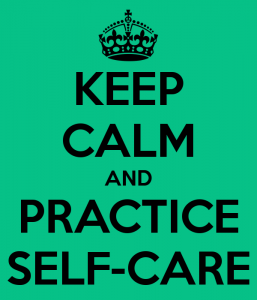The 6 Best Strategies to Manage Anxiety
We all experience some degree of anxiety in our lives. Life is full of anxiety provoking challenges that we have to face. In fact, anxiety is normal and adaptive as it helps us prepare for danger.
Therefore, the goal is to learn to manage anxiety, not eliminate it.
The fight or flight syndrome is useful when the stress is short term, (such as running for a bus so as to not be late), and the body is able to quickly return back to balance point. But when the stress is chronic, your body tries to sustain the high alert status well beyond the point that is healthy.
The Six Best Strategies to Manage Anxiety.
These techniques fall into three typical areas:
- the physical arousal that constitutes the terror of panic
- the heightened feelings of tension that correlated with being ‘stressed out’
- the mental anguish of rumination – a brain that wont stop thinking distressing thoughts
1. Breathe
Breathing exercises are one of the best and quickest ways to help regulate your body and emotion when you feel anxious. This will help with the distressing physical arousal that comes with feeling anxious. There are many breathing techniques but one of the best is called the 4,7,8 Breathing technique. The technique has 4 easy steps, as follows;
1. Breathe in through your nose for a count of 4.
2. Hold your breath for a count of 7.
3. Release your breath from your mouth with a whooshing sound for a count of 8.
4. Without a break, breathe in again for a count of 4, repeating the entire technique 3-4 times in a row, then resume normal breathing and activity.
2. Practice mindfulness
Mindfulness is simply the act of living in the present moment. Many people who are full of anxiety tend to focus a lot of their mental energy on the future. They spend an inordinate amount of their time and energy trying to make the future as predictable as possible. This type of living is driven by fear of the unknown. But, mindfulness refocuses that energy and tries to live fully in the present. It takes practice to live in the present moment when you are used to leaning out into the future, but the present is a far more peaceful place to live. Mindfulness can help with both the mental anguish and the physical arousal associated with anxiety.
Download our Mini Mindfulness Guide!
Learn how Mindfulness can Improve your day to day life
3. Do things you find Fun
Laughing is a great way to increase good feelings and discharge tension. Getting in touch with fun and play isn’t easy for the serious, tense worrier. A therapy goal could be simply to relearn what you had fun doing in the past and prescribe yourself some fun.

4. Recognise and challenge distorted thoughts and unhelpful thinking
If you are prone to feel a lot of anxiety, chances are that you have untrue thoughts or beliefs that are fueling your anxiety. For example, you might immediately assume that when a given situation doesn’t turn out as expected that it will become a worst-case scenario. These ways of thinking are distortions and act as lenses through which you typically see the world. The way out of these distortions is to train your mind to be objective and reflect on other possibilities. For example, instead of defaulting to negative about all the things that went wrong in that job interview, focus on what went well and what you might do differently the next time you are in a similar situation. Learning how to control the thoughts we listen to can have a profound effect on diminishing mental anguish.
Download the Depression Toolkit!
Learn how to Change your Thinking to Transform how you Feel!
5. Worry Well, but Only Once
Some worries just have to be faced head-on, and worrying about them the right way can help eliminate secondary, unnecessary worrying. When you feel that your worries are out of control try this next method:
- Worry through all the issues within a time limit of 10-20 mins and cover all the bases.
- Do anything that must be done at the present time. Set a time when it’ll be necessary to think about the worry again.
- Write that time on a calendar.
- Whenever the thought pops up again say, “Stop! I already worried” and divert your thoughts as quickly as possible to another activity – you may need to make a list of these possible diversions beforehand.
6. Taking care of yourself
Self-care plays a Surprisingly large role in your ability to manage anxiety. When you are getting an adequate amount of sleep, eating healthy meals, being active on a daily basis and avoiding dependence on substances like alcohol, you are building up your body and mind’s resilience to stress so that you can handle most of the challenges that come your way.
These skills do require patience and determination. However, once learnt, people gain a lasting sense of their own power and competence in working actively with their own symptoms to conquer anxiety through their own efforts.






Leave a Reply
Want to join the discussion?Feel free to contribute!